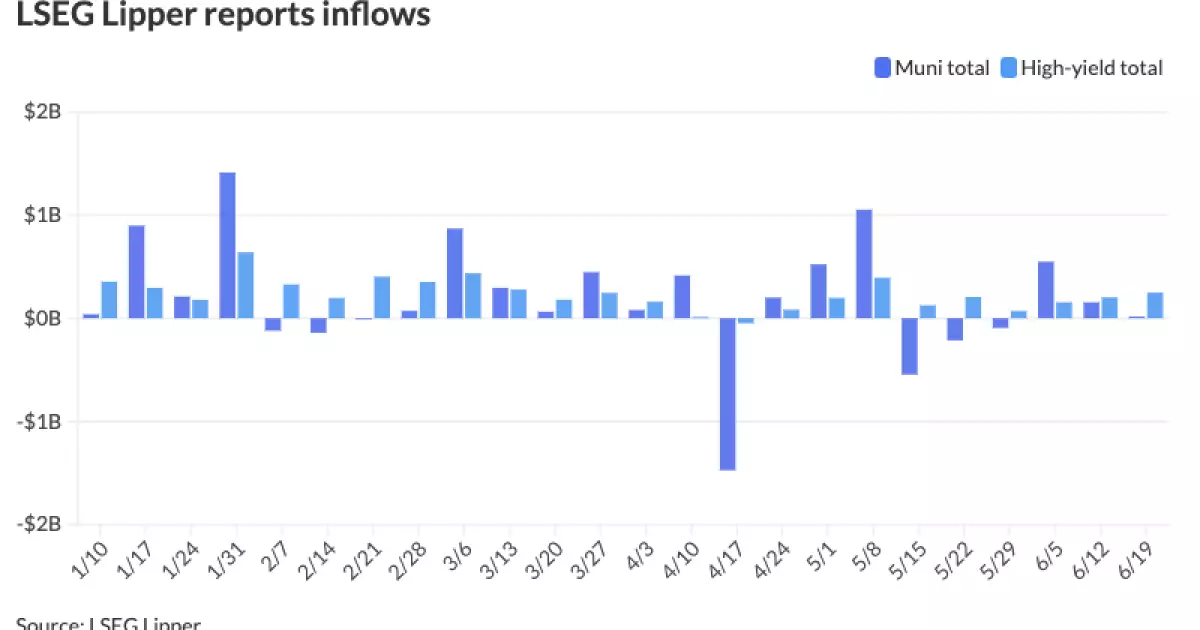The secondary market continues to show lighter trading and steady yields as the last deals of size were priced, and muni mutual funds experienced small inflows. The muni-to-UST ratios have remained mostly stable, with various ratios showing a consistent percentage relative to U.S. Treasuries. Experts note that munis have recovered well compared to USTs in June, with Jeff Timlin from Sage Advisory mentioning that the muni market will follow the cues from the UST market. However, the fund flows can exacerbate or mitigate muni yields.
The muni market is expected to see a decrease in new-issue supply in July, while reinvestment demand is projected to increase. Despite this, a significant amount of new capital is anticipated to enter the market, along with a subtle shift in treasury rates. Pruskowski from 16Rock Asset Management highlights that 2024 is on track to set records for issuance due to various factors. This includes the upcoming presidential election, the fiscal year end for many states, and concerns about higher financing levels. Steve Shutz from Brown Advisory echoes this sentiment, noting the significant increase in deals during the first week of June.
Municipal bond mutual funds have seen small inflows recently, following a period of outflows. Investors added funds to long-term funds, with high-yield funds showing particular strength. Shutz mentions that long-term yields are attracting investors looking to lock in returns. He predicts that mutual funds will continue to grow as the year progresses, especially if the Fed decides to cut rates. Despite the inflows, the market has not experienced the anticipated bounce back that participants expected.
Primary Market Activity
In the primary market, various deals were priced for issuance by BofA Securities and the Indiana Finance Authority. The Port of Seattle also conducted transactions in the competitive market, selling different types of bonds. The AAA scales for muni bonds have remained consistent, with yields fluctuating slightly across different timeframes. In contrast, U.S. Treasuries have shown weakness, with yields increasing at various maturities.
Overall, the muni market is experiencing a mix of stability and changes, influenced by factors such as fund flows, new issuances, and market conditions. Experts are closely watching how these dynamics will play out in the coming months, especially as the market reacts to external events such as political changes and economic indicators. Investors and issuers alike need to stay informed and adapt to the evolving landscape of the muni market to make informed decisions and capitalize on opportunities.

